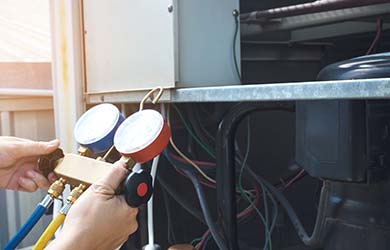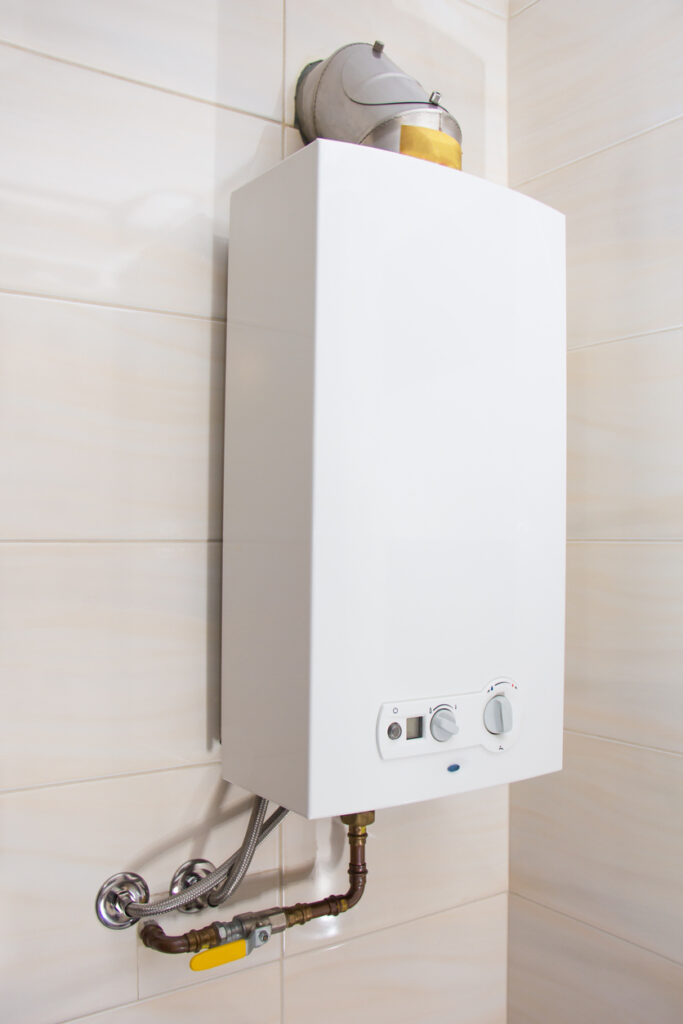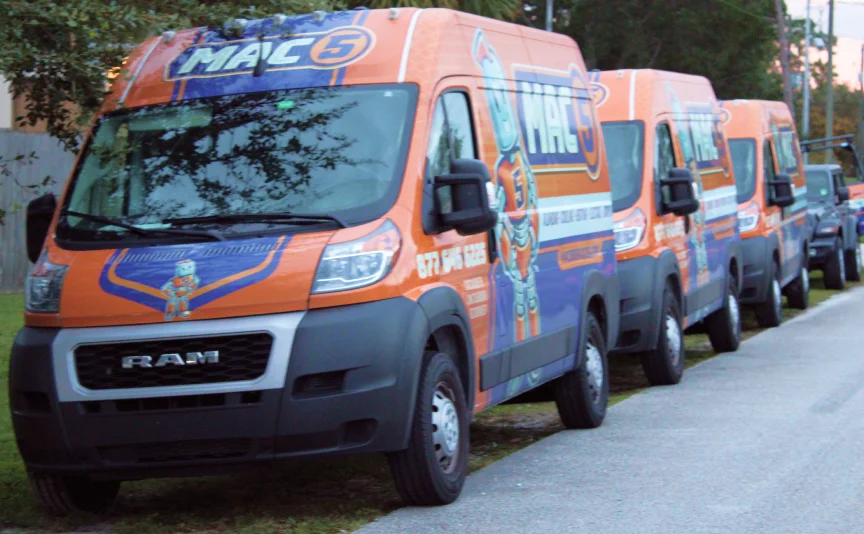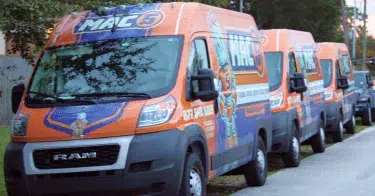Most Americans know about sewer lines, drain pipes, and other plumbing fixtures. However, not many know about their home’s sump pump.
You might think your storm drain handles all weather-related water flow. While that is partly true, a separate system helps facilitate input and output. Heavy rain doesn’t just go down the storm drain by itself.
It falls all around your home, seeping into the ground and different access points into your home. It will not take too long to fill up your pipes and cause clogs, which may lead to backflow and flooding.
Read on if you ask yourself, “what is a sump pump?” We are here to help shed light on sump pumps and their purpose.
The Importance of Sump Pumps
Sump pumps work with all the water your home is exposed to that isn’t produced by your plumbing fixtures.
Your wastewater and sewage are handled by drain and sewer lines. However, excess groundwater funnels into your sump pump, not your sewer pipes.
A sump pump has its own operations to facilitate water flow and does not rely on the rest of your plumbing to work. While it has its own power source and drainage point, it may still affect your home’s pipelines.
How Sump Pumps Work?
Sump pumps have storage vessels underneath your basement floor, where excess water funnels for proper drainage.
When water levels reach a certain point, the sump pump automatically signals its components to direct water flow to a discharge pipe leading away from your home. Thanks to its sophisticated systems, its various elements don’t require constant attention, automatically working in unison.
It’s the Set It & Forget It component of plumbing fixtures.
Parts of a Sump Pump
Different types of sump pumps have varying components. Some are more traditional, while others have integrated electrical components. Each sump pump is different, but here are the most common parts each shares.
Sump Pump
The entire unit is called a sump pump. However, an internal component at the core of its functions bears the same name.
The brain of the entire operation is also called a sump pump.
These cartridges pump water out of the unit. You may find them anywhere on or around one of these components within the sump tank:
- Next to the float road
- Below the check valve
- Attached to the discharge pipe
The sump pump is a large cartridge that pumps enough water pressure to direct flow into a drainage point out of storage.
Sump Basin
The sump basin is the main storage tank of your sump pump. Most of all essential components are found within the sump basin.
Its main job is to store water and keep vital components safe from external exposure. Its body is mostly designed with durable materials like clay, tiles, and concrete.
However, more expensive sump pump systems come with fiberglass or polyethylene tanks for increased reliability. The material separating your tank from its surrounding environment is critical, especially in humid areas.
Sump Pit
The sump pit is where the sump basin is nestled. Installing a sump pump requires sufficient space. Digging a hole with the right dimensions matters more than you think.
Smaller sump pits may suffocate your sump pump, and digging too deep or too big may slow absorption. The fit needs to be just right for seamless integration.
It isn’t the homeowner’s job to measure and dig a naturally constructed pit, but it is detrimental to your sump pump if your contractor doesn’t get the dimensions right.
It’s best to consider weather and climate conditions before determining the size of your sump pit.
Sump Liner
The sump liner protects your sump basin from sustaining any damage within the sump pit. The liner doesn’t play much of a role in its everyday functions, but it helps prevent your tank from cracks and abrasions.
The liner is an added water-proofing and anti-static coating that keeps gravel and other debris from penetrating the inner lining of the sump basin. While it takes a lot to infiltrate fiberglass and polyethylene, sharp debris can scratch at the surface enough to cause leaks and particle pollution.
Float switch
Float switches are at the frontlines of your sump pump. A float switch is a sensor floating within the basin, controlling water levels.
Float switches vary among units, with three main types:
- Tethered Float Switch (the most traditional and common for pedestal sump pumps)
- Vertical Float Switch (newer, more efficient, and affordable technology)
- Diaphragm Switch (A.K.A. water pressure switch has no floating component)
While each model differs, they serve the same function among all types of the sump pump. A float switch determines the capacity of your tank and signals the sump pump when to start pumping water into the discharge line.
Some floaters sit atop standing water and fulfill their purpose as the water rises. However, not all floaters react only when the water rises. Some switches react when pressure rises instead.
However, a stuck float switch won’t respond to water or pressure levels, causing various malfunctions.
A tethered float switch is directly linked to the sump pump. It acts as a lever, flipping a switch as it floats higher with increasing water levels.
Vertical float switches have ball-type floaters. The ball hits a switch upon water levels reaching a certain point, signaling the tank’s full capacity. It’s more reliable and efficient than traditional switches but more affordable than fully automated sensor switches.
The diaphragm switch is a newer innovation. Sump pumps require electricity to operate this type of switch, which rely on sensors determining water pressure instead of floating elements to toggle switches to instigate drainage.
Discharge Pipe | Discharge Lines
A discharge line is connected to a pipe or valve within the basin. While excess groundwater funnels into the bottom of your water table (a.k.a. sump pump), discharge lines help redirect them away from the tank.
Your sump pump is installed at the bottom of your home’s water table. Getting water into the sump pump is easy with the help of gravity. It helps water flow naturally into the sump pump until its capacity is maximized.
Your discharge line will safely lead it out of the tank, helping regulate water levels.
Check Valve
You will find the check valve along the discharge line. It responds to water pressure automatically, creating and closing an air gap accordingly.
It is sometimes referred to as a one-way valve, as its main purpose is to create an air gap to prevent water flow from staying or going back into the sump pit.
Ground fault circuit interrupter (GFCI)
Facilitating water flow using electricity is dangerous. All types of sump pump run on electricity. This volatile mix may lead to electrical and fire hazards without proper safety measures.
A GFCI comes with every sump pump, preventing users from walking into fatal shockwaves. While it can only hinder the intensity of electrocutions, it cannot wholly prevent it.
Users must always be aware of their sump pump, motors, power source, and water level for their own safety.
Motors
An electric motor powers your sump pump, which is affected by a power outage in your home. All types of sump pump work with electricity. Even fully submersible pump systems work with electricity by tapping into an external motor.
Submersible sump pumps and pedestal pumps cannot perform without a power source. A sump pump fails when there isn’t enough electricity to power the system, making a power outage during storms a hassle.
Battery: Backup Sump Pump
Fortunately, there are ways around a sump pump failure. A backup pump or backup power source is your home’s saving grace when your primary pump fails.
Different backups fit different sump pumps better than others. Before choosing between a water-powered backup or battery-powered backup, consider the size, model, and make of your primary sump pumps.
Types of Sump Pumps
Here are some of the most common sump pump installations in American households.
1. Submersible Sump Pump
Naturally, the pump body operates underwater. However, a submersible pump is completely submerged, with most featuring water-proof motors.
These primary pumps work better in residential environments, handling groundwater and minimal sewage. However, they are less sustainable in industrial settings due to their make.
Submersible Sump Pump Systems & Make
- Power Source: Electrically or water-powered system
- Sump Pump Motor: Integrated motors
- Float Switch: Integrated Float Switch
- Size: Compact
- Build: Ceramic, carbon, cast iron, low-grade steel
Submersible Pumps Benefits
Submersible sump pumps are beneficial for residential homes. These sump pumps’ horsepower and flow rate are sufficient for small to large homes in moderate climates.
A submersible sump pump is more manageable and easy to maintain with affordable costs.
Submersible Pumps Drawbacks
This sump pump works fine for residences but won’t fair well against industrial liquids. Harsh chemicals may chip at its paint and material, making it more susceptible to cracks and abrasions.
2. Pedestal Sump Pumps
Pedestal pumps aren’t typically more expensive than submersible counterparts but may be more costly to maintain. Its motor may short-circuit if your home is more susceptible to a flooded basement floor.
Its motors aren’t water-proof and sit above your sump pump away from water exposure.
Pedestal Sump Pump System
- Power Source: Electricity or battery-operated system
- Sump Pump Motor: External or separate motor
- Float Switch: Tethered Float Switches
- Size: Industrial
- Build: Polypropylene, PVDF, or industrial-grade steel
Pedestal Pump Benefits
These pumps are more durable and come in a variety of size options. They are generally deeper and larger in diameter. There are some with twice the capacity of submersible counterparts.
Pedestal sump pumps also feature industrial-grade material. They are also used during long-term construction against different seasons and harsh chemicals.
Pedestal Pump Drawbacks
The only real drawbacks are its non-waterproof elements. Pedestal pump motors may succumb to water damage, requiring replacement.
It is best to have backup sump pumps if pedestal types are your primary pump to prevent basement flooding and other water-related damage to your home.
Backup Sump Pumps
A battery-operated backup pump is the most common installation, but there are more options against unpredictable weather. A battery backup sump pump is reliable but runs on limited power.
Your power may not be back before your battery-operated backup runs out of power.
A water-powered backup pump is a reliable and affordable natural alternative. It runs on natural resources available to your sump pump, especially during stormy weather.
Why Having a Backup Sump Pump Helps?
Remember, mold thrives in moist and humid environments like your basement or crawl space. Even after drying it all out, mold spores may attach to different areas of your home. Having a backup helps prevent a flooded basement.
However, routine maintenance is best to fight against damages and mechanical failures, especially when your battery backup is prone to fail.
Proper Sump Pump Installation and Maintenance
With so many components working together simultaneously, failure, wear, and tear are nearly inevitable. You shouldn’t wait for the basement flooding to call in the pros!
It would be best if you kept up with sump pump maintenance every year to ensure the safety of your unit and the rest of your home. We have just the guys for you if you need a sump pump repaired, maintained, or replaced.
Mac5 Services: Plumbing, Cooling, Electric, Heating, & Drains
Our team of specialists will ensure all your fixtures work seamlessly regardless of their placement in your home’s water table. The first step against flooding is determining a leak.
Our leak detection services help protect homeowners from sustaining water damage. Some leaks are harder to find and require professional inspection to find and remedy.
Inner pipelines aren’t always accessible, making it harder to pinpoint the source of the leak. It’s even harder to repair without causing more damage.
Trust your pipe repair and the rest of your plumbing maintenance needs to our dedicated team of pros!
Is sump pump failure covered by my insurance?
Water damage isn’t typically covered by home insurance. However, our reps will help you figure it out through online consultation options.
321-244-7500
You can also call our team for more urgent sump pump concerns.







